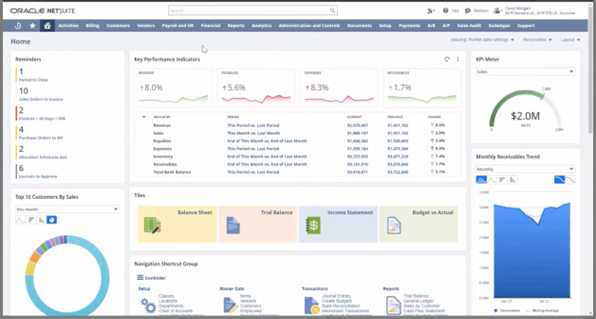Access to more information doesn’t necessarily lead to better business choices. Advanced analytics and artificial intelligence (AI) can extract insights from unprecedented volumes of data, yet many organizations still struggle with delayed decisions, costly mistakes, and missed opportunities. The resolution to this decision-makers’ paradox is that good business data is necessary but not sufficient for making sound decisions—companies also need a sound decision-making process.
The good news is that decision-making effectiveness can be systematically improved, whether decisions rest with an individual executive or a committee. By understanding and addressing common challenges—including information overload, fear of failure, “groupthink,” and an inability to correctly identify the issue or problem—companies can develop stronger decision-making processes.
What Is Effective Decision-Making?
Effective decision-making consistently boosts business results. It can be achieved through a structured process of evaluating options using critical thinking to assess multiple inputs, resolve conflicting data, and evaluate risks.
But no matter how structured and skilled business leaders are, they cannot make effective decisions without clear goals and priorities. Successful decision-makers follow a systematic approach that typically starts with clearly defining the problem and then putting it in the context of their business goals and objectives. That should produce a clear picture of what solutions look like and how they would impact the business. Then they gather relevant data, identify and evaluate alternatives, implement their chosen solution, and monitor the results for opportunities to improve that solution. They also recognize when to move quickly versus when to take more time for analysis. For instance, a manufacturing quality issue might require immediate action, while a strategic investment decision might require deeper evaluation.
Another key characteristic of effective decision-making is the ability to balance competing priorities while maintaining objectivity. Decision-makers must weigh business objectives against various stakeholder interests, from those of employees and customers to shareholders and surrounding communities. They need to consider both short-term impacts and long-term consequences, while remaining aware of their own potential biases or emotional responses that could cloud their judgment.
Key Takeaways
- Decision-makers can’t make viable decisions without understanding the threats that could undermine their success.
- Sometimes decisions must be made with imperfect information.
- Decision-makers rarely hit the mark when the company lacks clear objectives and well-defined priorities.
- Effective decision-makers usually solicit expert input and discuss strategy with their trusted advisers.
The 12 Most Common Decision-Making Challenges and Strategies to Overcome Them
As researchers discovered in a 2024 study, “over half of companies have styles that result in obscured or stagnant decision-making.” Indeed, even the most experienced leaders will, from time to time, encounter obstacles that derail their decision-making process. Some challenges are internal to the decision-maker, such as fear of failure or cognitive bias. Others are external, such as organizational resistance or incomplete information.
Understanding these common challenges—and having strategies to address them—helps decision-makers navigate difficult choices. The following 12 challenges represent the most common barriers to effective decision-making. For each, we’ll examine why it occurs, what it looks like in practice, and how to overcome it.
1. Lack of Resources and Support
Without resources and support, a decision-maker is alone in the wilderness. Their decisions may carry no weight without the support of people who can implement their choices.
- Why it occurs: Decisions sometimes rely on someone who lacks sufficient experience or organizational inputs to make an informed choice. An inexperienced manager may eschew expert advice or neglect to ask for resources to help them gather or assess the pertinent details that set the stage for a wise decision.
- What it looks like: Failing to fully assess the implications of a decision, such as a product implementation, may result in problems such as underbudgeted staff training or unanticipated service issues, ultimately diminishing a project’s expected return.
- How to resolve: Decision-making often improves when it follows consultation with a broad range of relevant experts. Many organizations assemble ad-hoc teams that may include a finance team member, an operations expert, and a change management leader to provide valuable perspectives that reduce the risk of a miscalculation and keep the project on time and budget.
2. Inability to Manage Risk
Unmanaged risks may include potential threats that haven’t been anticipated or adequately mitigated. If these risks materialize, they can result in severe financial damage, regulatory sanction, and/or loss of company trust.
- Why it occurs: Decision-makers can’t make viable decisions without understanding the threats that could undermine their success. Managing risk requires constant vigilance, including anticipating, evaluating, or implementing preventive measures. Failing to anticipate significant risks, such as supply chain problems due to geopolitical disruption or a natural disaster, may stem from a poor approach to risk management.
- What it looks like: Poor communications and insufficient planning and coordination between people and teams. Decision-makers and leaders with an inadequate understanding of business risk management may be ill-prepared to prevent trouble or harness the resources to overcome it.
- How to resolve: Successful risk management requires managerial accountability and a team to assess risk, establish guidelines, and enact mitigation policies. Risk management teams, often ad-hoc groups that include legal, compliance, operations, and finance experts, may conduct scenario planning to anticipate possible risks and plan viable strategies for managing stakeholder expectations and containing risks that may harm the company’s reputation or stakeholder value.
3. Inability to Correctly Identify the Problem
Decision-makers depend on accurate inputs to make timely and proper decisions. Misidentifying a problem makes solving it difficult, if not impossible.
- Why it occurs: Inconclusive data or inadequate expertise contributes to poor decisions or operational errors. Decision-makers who do not recognize problems may operate in a vacuum—like physicians who haven’t examined their patients.
- What it looks like: Overlooked problems worsen over time. Companies waste time and money implementing temporary or inadequate solutions that don’t solve root problems.
- How to resolve: Decision-makers must understand when to consult with in-house or third-party experts. They must evaluate multiple solutions when possible and assess their downstream business impacts. For instance, an organization may choose the most cost-effective solution only to discover that a more comprehensive and expensive solution is necessary to achieve the company’s objectives.
4. Fear of Failure
Atychiphobia—fear of failure—is debilitating to decision-makers. It can harm their companies and their careers by inhibiting their ability to act decisively.
- Why it occurs: Not everybody is well-prepared to accept the negative consequences of a high-stakes decision. Sometimes a decision is perceived as a “no-win” situation, and the lack of a safe choice may generate considerable stress for the decision-maker.
- What it looks like: When few attractive options are available, some leaders, and even businesses, enter an endless loop of “analysis paralysis,” where it becomes easier to procrastinate rather than make an immediate choice. Uncertainty or anxiety about how a high-stakes decision will turn out is often perceived as a fear of failure.
- How to resolve: Fear of failure can be managed just like any other phobia. Start with small or low-stakes decisions and learn from how those turn out. Divide a looming decision into more manageable “chunks.” Turn to mentors who can bless or help refine your decision-making approach. In certain situations, establishing a contingency plan may bolster a decision-maker’s confidence that things will turn out well no matter what happens.
5. Incomplete or Unreliable Information
Insufficient information can torpedo nearly any decision. Bad information may take the form of imprecise data insights, business forecasts, or manufacturing specifications. All of these can be very costly to companies.
- Why it occurs: Sometimes even the most sophisticated organizations or subject-matter experts must make decisions with imperfect information. Nonexperts almost always act without complete command of the facts. Often that’s a matter of time constraints—and there’s rarely enough time or resources to gather and evaluate all the possible facts.
- What it looks like: Making decisions based on a small sample size can lead to mistakes and false conclusions. Incomplete information limits a decision-maker’s options, and unreliable information can undermine their mission.
- How to resolve: Obtaining thorough, diverse, and actionable information requires planning and harnessing sufficient resources. One key to making thoughtful decisions is anticipating the problem and gathering necessary insights before deadlines hinder the decision-making process.
6. Analysis Paralysis and Information Overload
As mentioned above, when people fear the aftermath of a poor decision, they can experience analysis paralysis from information overload. Decision-makers suffering from one of these widely recognized conditions variously describe themselves as mentally drained, anxious, and unable to make a cogent decision.
- Why it occurs: It’s self-inflicted. Many decision-makers dive deeply into a topic to learn all they can before deciding. Overload happens when decision-makers overshoot their targets and fail to come up for air. While thorough research is commendable, doing “just enough” is healthier and more efficient.
- What it looks like: Organizations with analysis paralysis have prolonged decision-making processes that hinder progress. A product development team might spend months researching market trends, competitor products, and consumer preferences, amassing vast amounts of data that they struggle to synthesize into actionable insights. A financial analyst evaluating investment strategies might become overwhelmed by economic indicators, market reports, and financial models, leading to indecision. In both cases, the pursuit of perfect information impedes timely and effective decision-making, potentially causing project delays, missed deadlines, and lost competitive advantage.
- How to resolve: Focus on the important details and know when to say when. Take time to absorb the many inputs you’ve received and focus on your original objective. If necessary, make small choices rather than a monolithic one. Ultimately, the company should hold its decision-makers accountable through the use of key performance indicators (KPIs), such as mean time to decision.
7. Organizational Resistance and Political Pressure
Humans can’t help but form opinions about decisions and matters of importance to them. Change may be inevitable, but resistance runs hot when people aren’t well-prepared for it.
- Why it occurs: Employee resistance and pushback happen when decisions impact workers in ways they deem unfavorable. And if decisions and their effects haven’t been well articulated to the employees, they will likely default to a “change is bad” mindset. Many groups and individuals feel empowered to push back at their employers about changes that could negatively impact their work, pay, or future in a company.
- What it looks like: Many people prefer the “devil they know” to learning about or embracing something new. Poorly presented change feels threatening to people. Resistance can be either passive or active. For instance, active resistance can lead to actions such as walkouts, protest letters, and the organization of unions, with employees attempting to impede the new marching orders. Productivity may suffer and jobs may be lost.
- How to resolve: Implementing a change management strategy before announcing a potentially controversial decision helps companies avoid friction. It can help meet organizational objectives by improving employer/employee communication and building trust. Everyone wants to feel heard or understood.
8. Cognitive Bias
A cognitive bias is a belief system that operates unconsciously, causing people to overlook facts and embrace irrational conclusions. Confirmation bias, for example, encourages people to prize new information that supports an existing belief. Negativity bias spurs people to believe criticism more than compliments.
- Why it occurs: Everyone has cognitive biases. Decision-makers who fail to recognize and address them may readily make or accept false assumptions. Many people have a bias blind spot that allows them to recognize other people’s biases but somehow overlook their own.
- What it looks like: Many people begin decision-making with preconceived notions about which choices will or won’t drive a desirable outcome.
- How to resolve: There’s no one-size-fits-all cure for cognitive bias, primarily because there are more than a dozen different types of biases. Once people realize that they’re demonstrating a bias, they can learn how it alters their judgment—impacting decisions and workplace behavior—and seek a more objective path.
9. Groupthink
Groupthink is a possible by-product of decisions made by a committee. In searching for consensus, groups often opt for ideas that appeal to the lowest common denominator because the desire for agreement stifles deeper thinking.
- Why it occurs: Many, if not all, companies make decisions by committee. Yet that practical-sounding idea sometimes generates complicated or disjointed recommendations because there is often no painless way to balance the competing interests of various stakeholders.
- What it looks like: Committees often start with great intentions. But when striving for agreement, the team might rush through the assessment of alternatives, leading to poorly thought-out choices and less-than-ideal results. This hasty pursuit of harmony can cause the group to overlook crucial details, potentially resulting in decisions that lack depth and effectiveness.
- How to resolve: Decision-making committee leaders must set ground rules to foster collaboration, reward participation, and set good examples for team members. This can help a collaborative team to rise above the perils of group decision-making dynamics.
10. Unclear Goals and Priorities
Decision-makers rarely hit the mark when the company lacks clear objectives and well-defined priorities.
- Why it occurs: A poorly articulated business strategy is one of the warning signs of a company in flux. Decision-makers may not know what to work on or fully understand what they’re trying to accomplish. Changing leaders or tactics should be a time to reset priorities, but unless companies are careful, the organization can lose its traction and diminish employee engagement.
- What it looks like: Decision-makers may spin their wheels until the company sets new goals and priorities. An in-depth decision-making process may hit a brick wall and never reach a conclusion. Only short-term thinking is possible when the company lacks a strategic plan and a framework for approving actionable decisions. Employees may experience lower engagement, mainly when it’s unclear what the company plans to accomplish.
- How to resolve: Hold leadership accountable for failing to articulate clear goals and priorities—after all, these are core decision-making skills. Explain to workers how they fit into the company’s future.
11. Impulsive or Emotional Decision-Making
Making snap judgments under duress can lead to buyer’s remorse or other forms of regret. No one is at their best when their emotions run high, and they overlook the benefits of practical solutions or compromise.
- Why it occurs: Humans have feelings, even at work, that are challenging to regulate. Many people lack training or practice in emotional detachment under intense pressure.
- What it looks like: Emotional choices can cause financial losses and severed ties with customers, partners, and suppliers. Emotional or impulsive decisions can impact professional careers and personal relationships.
- How to resolve: Decision-makers perform better when they “think slow” and reflect on their values and priorities to avoid impulsive and emotional decisions. Take a walk and give yourself time to think or possibly meditate before making important decisions.
12. Lack of Input and Communication
Some leaders believe they must be lone wolves, with no one capable of providing helpful feedback about an impending decision. Some companies do not foster collaborative input.
- Why it occurs: Under pressure to make high-stakes decisions, some individuals treat the process as a solitary undertaking. They don’t solicit expert advice or explain their thoughts to others who will carry out their plans. It can be difficult to reach decisions in a group setting, but a lack of communication can generate decisions that lack crucial perspectives and lead to implementation challenges.
- What it looks like: Lone wolf decision-making often manifests as executives or managers making critical choices without consulting their teams or relevant departments. A CEO might decide to launch a new product line without input from marketing, finance, or operations teams; a department head might make policy changes without discussing them with affected staff. These decisions, made in isolation, often cause employee dissatisfaction and missed opportunities for innovation or improvement.
- How to resolve: There’s a distinction between owning a responsibility and making decisions in a vacuum. Effective decision-makers must solicit expert input, discuss strategy with trusted advisers, and invite all stakeholders to weigh in about their concerns and preferences for an impending decision. Soliciting these inputs may win more buy-in and help drive broader and faster acceptance of the decision. Collaborative communication tools can expedite this process and make it more frictionless for everyone concerned.
Technology for Better, Faster Decisions
Companies don’t have to accept decision-making challenges as inevitable. Today’s integrated business systems can provide decision-makers with comprehensive data and insights to help them overcome barriers to effective choices. The integrated analytics and reporting capabilities of NetSuite’s cloud-based enterprise resource planning (ERP) system, for example, help combat information overload with customizable dashboards that present data visually in charts, tables, and other graphics.
With NetSuite ERP, decision-makers can actively manage and tap financial and operational data and customize their views without requiring software engineers—warding off analysis paralysis while helping to ensure that decisions are based on reliable, complete data. And by providing real-time visibility across operations, finance, and other business functions, NetSuite enables leaders to identify problems accurately and manage risks effectively. This comprehensive view also helps prevent siloed decision-making, as stakeholders across departments can access and analyze the same reliable data, fostering more collaborative and informed choices.

Better decision-making can advance a company’s business performance—but challenges exist at every turn. Businesses can tackle these obstacles through structured decision-making processes, reliable data, and clear organizational goals. Investing in the tools and training that help decision-makers succeed can lead to faster market response, more efficient resource allocation, and improved risk management. Thus, companies that master effective decision-making can create lasting competitive advantage.
Decision-Making Challenges FAQs
What are the major issues in strategic decision-making?
The main decision-making issue many businesses face is making significant decisions with incomplete or inaccurate information, unclear priorities, or vague objectives. Seasoned decision-makers typically arrive at their choices after engaging in a process that solicits expert input and considers goals, values, resources, and economic priorities.
What factors affect business decision-making?
Dozens of factors can affect a business’s decision-making, from internal factors such as the organization’s structure (e.g., whether decision-making is centralized or decentralized), its culture (whether its risk tolerance is high or low), available resources (financial, technological, and human), and the clarity of its short- and long-term objectives. A multitude of external influences, such as market conditions, taxes, labor laws, regulatory concerns about data, climate, and business reputation, also may shape business decisions.
Why do businesses struggle with decision-making?
Until recently, companies focused only on honing the decision-making skills of senior executives. Today, many companies realize that unless they provide adequate training and support to decision-makers at all levels, they may put them in a weak position. This is one of the key reasons why many companies are rushing to embrace data-driven decisions. Putting facts in decision-makers’ hands helps prevent ill-informed or unsupported decisions. Improving decision-making processes can help reduce errors, drive higher profits, and enhance risk management outcomes.









